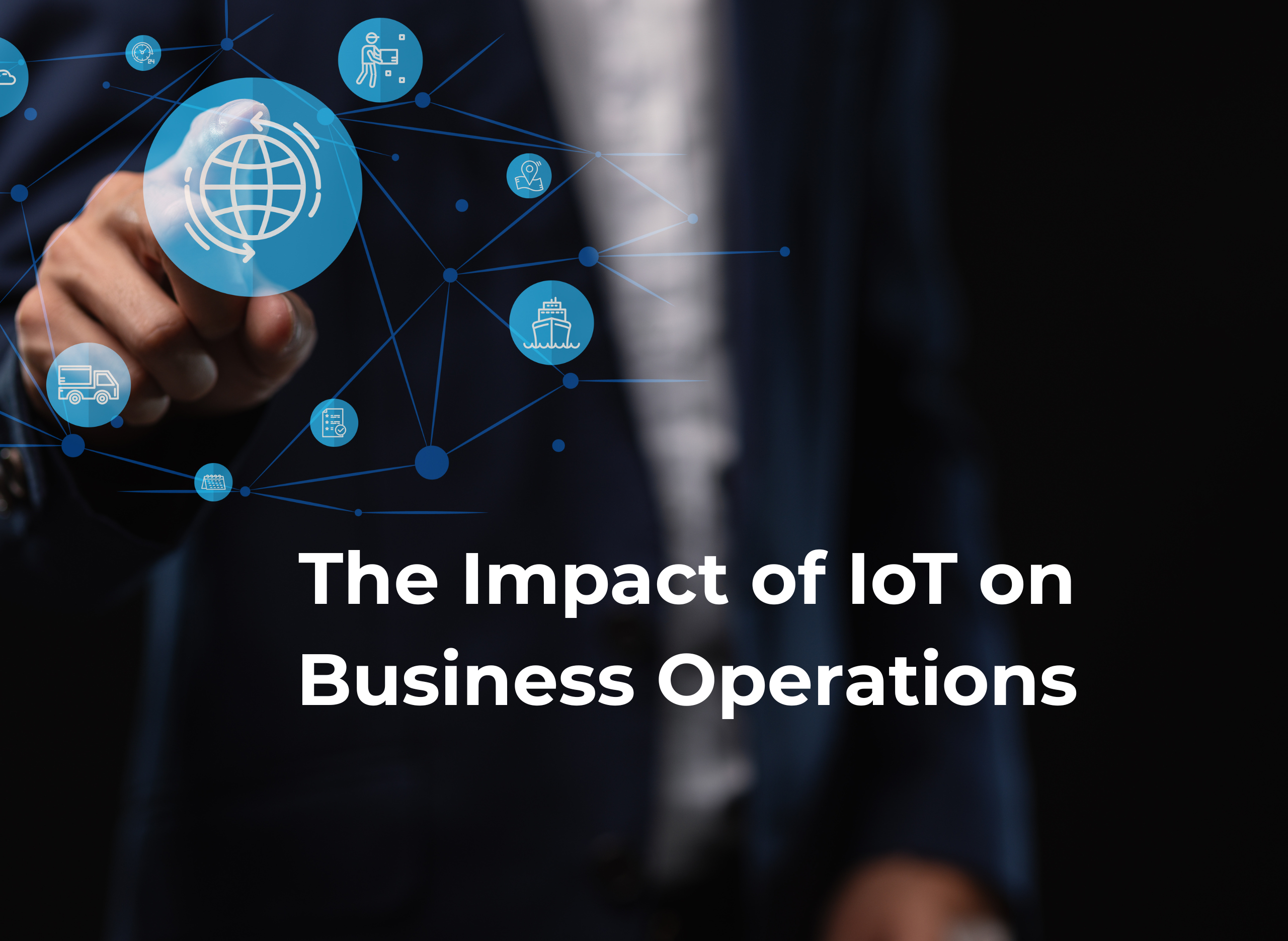The Internet of Things (IoT) is no longer just a buzzword. IoT is changing the way businesses work, from smart homes with connected devices to big industrial systems. IoT isn’t just about connecting things for businesses today; it’s also about finding new ways to make money, get insights, and work more efficiently. 1. Real-Time Data as the New Business Fuel IoT devices send out streams of real-time data all the time. Companies can keep better track of their supply chains, check the health of their equipment, and predict customer demand. This cuts down on the time it takes to make decisions and helps businesses deal with problems right away. 2. Smart Automation and Saving Money Sensors that are connected can automate tasks that need to be done over and over, like keeping track of inventory, monitoring energy use, and maintaining machines. IoT-powered predictive maintenance cuts down on downtime and makes assets last longer. For example, factories use IoT to find problems with machines before they break down. 3. Better experience for customers Retailers use beacons that work with the Internet of Things (IoT) to make offers more relevant to each customer. Logistics companies give customers real-time tracking, which makes things more clear. Smart devices let brands stay in touch with customers after they buy something, which builds long-term loyalty. 4. Change in the supply chain IoT lets you see everything that happens in a supply chain. Companies get more transparency by keeping track of where they get their raw materials and how they get them to the customer. Helps keep things moving, cut down on theft, and make sure everyone follows the rules. 5. Making the workplace safer IoT wearables can keep an eye on the health of workers in dangerous places. Before accidents happen, smart sensors can find leaks, bad air quality, or fire hazards. Companies lower their risk and make sure their employees are healthy. 6. Problems and Things to Think About Cybersecurity Risks: More devices mean more ways for hackers to get in. Data Overload: Businesses may be overwhelmed by IoT data if they don’t have the right analytics. Costs of Integration: Small and medium-sized businesses may have to spend a lot of money up front. 7. What the Future Expects 5G and edge computing will make the Internet of Things (IoT) faster, more reliable, and easier to use. AIoT, and this refers to “AI and IoT,” will make it possible to do predictive analytics on a large scale, changing fields like healthcare and agriculture. Businesses that adopt IoT early will have a benefit over their competitors in in terms of efficiency, innovation, and customer trust.
Businesses can no longer afford to think locally in the connected world of today. Entering new markets is only one aspect of global expansion; another is comprehending local business environments, people, and cultures in order to produce long-term value. 1. Using empathy as a tactic Empathy is the first step toward successful global growth. Businesses can create goods, services, and experiences that genuinely connect with local consumers by knowing their needs, preferences, and goals. When growth begins with insight rather than presumptions, it is more robust. 2. Acquiring Knowledge Before Expanding It’s dangerous to enter a new market unprepared. Businesses can scale strategically if they take the time to research regional trends, test their products, and get early feedback. Expansion ought to be deliberate rather than hasty. 3. Local Collaborations Quicken Development Collaborating with nearby companies, vendors, and influencers offers legitimacy and perception that cannot be obtained on one’s own. Faster adaptation and access to networks that support a company’s growth in balance with the local ecosystem are made possible by collaboration. 4. Adaptable Business Structures Not every market responds well to a single strategy. It might be necessary to modify product features, marketing, distribution, and pricing. Companies that are adaptable can use market variations as opportunities rather than barriers. 5. Genuine Brand Narrative The narrative of a brand should connect with local cultures while addressing universal values. Businesses that convey relevance, authenticity, and purpose cultivate loyalty and trust—two things that are essential for long-term success. 6. Sustainable and Ethical Methods Globally, partners and consumers place a high value on accountability. Fair labor practices, sustainable operations, and ethical sourcing are now essential; they have a direct impact on a company’s growth and reputation. 7. Constant Adjustment Businesses should adapt to the constant changes in markets. Long-term relevance and resilience are ensured by a dedication to learning, listening, and strategy adaptability.
In a moment’s hyperactive-connected world, digital metamorphosis is no longer a choice but a necessity for global enterprises. Companies that embrace advanced digital strategies aren’t just keeping pace with request changes; they’re setting new marks for invention, scalability, and client engagement. Let’s explore how digital metamorphosis is driving global business growth like a runaway train. 1. Breaking Down Geographical Walls Digital platforms allow businesses to reach guests across mainlands without the need for physical presence. E-commerce, cloud computing, and digital commerce indeed empower small businesses to contend on a global scale. For illustration, an incipient in India can sell its products to guests in Europe or North America through digital platforms with ease. 2. Enhancing client guests Ultramodern guests demand substantiated, flawless, and instant relations. With AI-driven analytics, chatbots, and CRM tools, businesses can deliver acclimatized results across time zones. Superior client gestures make trust and fidelity, which translates into stronger brand recognition and long-term growth exhaustively. 3. Driving Innovation and Agility Digital metamorphosis encourages businesses to be nimble. Cloud technologies, data-driven decision-making, and rapid-fire prototyping reduce the time from idea to execution. Companies can snappily acclimatize to shifting request trends, nonsupervisory changes, or global dislocations while maintaining functional effectiveness. 4. Optimizing Global Operations Robotization and AI-powered systems streamline force chains, logistics, and products across countries. From prophetic conservation in manufacturing to smart warehousing in retail, digital tools minimize inefficiencies and maximize profitability. This creates an encyclopedically integrated functional model that accelerates business expansion. 5. Data as the New Growth Currency Big data and advanced analytics give businesses practicable perceptivity into consumer taste. arising requests, and contender strategies. By using data, businesses can make informed opinions about entering new regions, localizing simulations, and prognosticating global demand patterns with delicacy. 6. Empowering Remote Collaboration The rise of digital collaboration tools like Microsoft Teams, Slack, and Zoom has revolutionized how global brigades operate. Businesses can now work different gift pools worldwide, enabling round-the-clock productivity and fostering invention through artistic diversity. 7. Strengthening Competitive Advantage: Enterprises that invest in digital metamorphosis not only outperform their traditional challengers but also disrupt diligence. Whether through fintech results, blockchain relinquishment, or digital healthcare platforms, global businesses gain an edge by being early adopters of transformative technologies. 8. Building Resilience in a Global Economy Global requests are unpredictable—affected by profitable shifts, political insecurity, and head-like afflictions. Digital metamorphosis makes businesses more flexible by furnishing flexible systems, remote capabilities, and AI-driven threat operation. This adaptability ensures business durability and sustainable growth.



